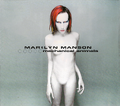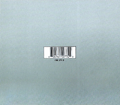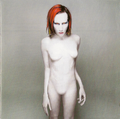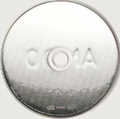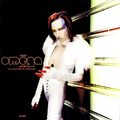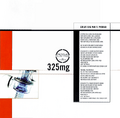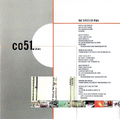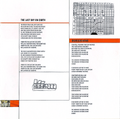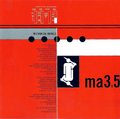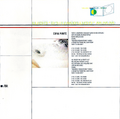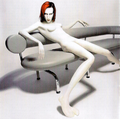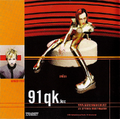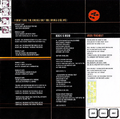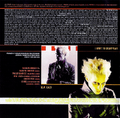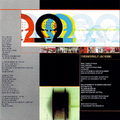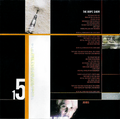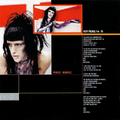Difference between revisions of "Mechanical Animals (album)"
(→Concept) |
(15th in the united states.) |
||
| Line 6: | Line 6: | ||
| Artist = [[Marilyn Manson (band)|Marilyn Manson]] | | Artist = [[Marilyn Manson (band)|Marilyn Manson]] | ||
| Cover = MechanicalAnimals.png | | Cover = MechanicalAnimals.png | ||
| − | | Released = September | + | | Released = September 15, 1998 |
| Recorded = 1997–1998 at the White Room, Westlake Recording Studios in West Hollywood, California and Conway Studios | | Recorded = 1997–1998 at the White Room, Westlake Recording Studios in West Hollywood, California and Conway Studios | ||
| Genre = Glam Rock<ref name="BrowneEW">{{cite web|last=Browne |first=David |url=http://www.ew.com/ew/article/0,,63710,00.html |title=Mechanical Animals Music Review |publisher=''Entertainment Weekly'' |date=1998-09-14 |accessdate=2010-10-23}}</ref><ref name="AmazonEd"/><ref name="heath1998">{{cite web|last=Heath |first=Chris |url=http://www.rollingstone.com/music/news/14639/80382 |title= The Love Song of Marilyn Manson |publisher=''Rolling Stone'' Magazine (RS 797) |date=1998-10-15 |accessdate=2010-09-11}}</ref><ref name="Salon MA"/><ref name="Powers2004">{{cite web|last=Powers |first=Anne |url=http://www.rollingstone.com/music/reviews/album/7480/37543 |title= RS Mechanical Animals review |publisher=''Rolling Stone'' |date=2004-01-01 |accessdate=2010-11-17}}</ref><ref name="NME MA"/><ref name="Allmusic MA"/><br>Post-industrial rock<br>Electronic Rock<ref name="NME MA"/> | | Genre = Glam Rock<ref name="BrowneEW">{{cite web|last=Browne |first=David |url=http://www.ew.com/ew/article/0,,63710,00.html |title=Mechanical Animals Music Review |publisher=''Entertainment Weekly'' |date=1998-09-14 |accessdate=2010-10-23}}</ref><ref name="AmazonEd"/><ref name="heath1998">{{cite web|last=Heath |first=Chris |url=http://www.rollingstone.com/music/news/14639/80382 |title= The Love Song of Marilyn Manson |publisher=''Rolling Stone'' Magazine (RS 797) |date=1998-10-15 |accessdate=2010-09-11}}</ref><ref name="Salon MA"/><ref name="Powers2004">{{cite web|last=Powers |first=Anne |url=http://www.rollingstone.com/music/reviews/album/7480/37543 |title= RS Mechanical Animals review |publisher=''Rolling Stone'' |date=2004-01-01 |accessdate=2010-11-17}}</ref><ref name="NME MA"/><ref name="Allmusic MA"/><br>Post-industrial rock<br>Electronic Rock<ref name="NME MA"/> | ||
| Line 17: | Line 17: | ||
| }} | | }} | ||
| − | '''''Mechanical Animals''''' is the third full-length studio album by [[Marilyn Manson (band)|Marilyn Manson]]. It was released on September | + | '''''Mechanical Animals''''' is the third full-length studio album by [[Marilyn Manson (band)|Marilyn Manson]]. It was released on September 15, 1998 by [[Interscope Records]], marking the beginning of the band's brief foray into glam rock in stark contrast to the harsher and abrasive Industrial sound of their earlier and succeeding efforts. |
It is a concept album and the second installment in a [[Triptych|trilogy]] that includes ''[[Antichrist Superstar]]'' and ''[[Holy Wood (In the Shadow of the Valley of Death)]]''. It debuted at No.1 in its first week of sale, making it the first Marilyn Manson album to do so. It spawned four singles ("[[The Dope Show]]", "[[Rock Is Dead]]", "[[I Don't Like the Drugs (But the Drugs Like Me)]]" and "[[Coma White]]"). | It is a concept album and the second installment in a [[Triptych|trilogy]] that includes ''[[Antichrist Superstar]]'' and ''[[Holy Wood (In the Shadow of the Valley of Death)]]''. It debuted at No.1 in its first week of sale, making it the first Marilyn Manson album to do so. It spawned four singles ("[[The Dope Show]]", "[[Rock Is Dead]]", "[[I Don't Like the Drugs (But the Drugs Like Me)]]" and "[[Coma White]]"). | ||
Revision as of 08:00, 20 December 2010
- This article is about the album. For other uses, see Mechanical Animals (song) and Mechanical Animals (tour).
| Mechanical Animals | |||||
|---|---|---|---|---|---|
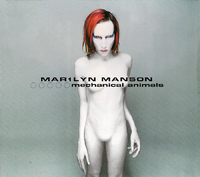
|
|||||
| Studio album by Marilyn Manson | |||||
| Released | September 15, 1998 | ||||
| Recorded | 1997–1998 at the White Room, Westlake Recording Studios in West Hollywood, California and Conway Studios | ||||
| Genre | Glam Rock[1][2][3][4][5][6][7] Post-industrial rock Electronic Rock[6] |
||||
| Length | 62:38 | ||||
| Label | Nothing, Interscope | ||||
| Producer | Michael Beinhorn, Marilyn Manson, Sean Beavan | ||||
| Marilyn Manson chronology | |||||
|
|||||
Mechanical Animals is the third full-length studio album by Marilyn Manson. It was released on September 15, 1998 by Interscope Records, marking the beginning of the band's brief foray into glam rock in stark contrast to the harsher and abrasive Industrial sound of their earlier and succeeding efforts.
It is a concept album and the second installment in a trilogy that includes Antichrist Superstar and Holy Wood (In the Shadow of the Valley of Death). It debuted at No.1 in its first week of sale, making it the first Marilyn Manson album to do so. It spawned four singles ("The Dope Show", "Rock Is Dead", "I Don't Like the Drugs (But the Drugs Like Me)" and "Coma White").
Contents
Concept
- for a complete overview of the Trilogy see Triptych.
In the album, Manson takes on two roles, being a substance addicted glam rocker and a gender ambiguous Alien called Omēga (pronounced oh-mee-gah) who, much like David Bowie's Ziggy Stardust, falls down to earth, is captured and then turned into a rock star product with a band called The Mechanical Animals. He has become numb to the world, either lost or high in outer space or the Hollywood Hills, through excessive drug use as a coping mechanism with his life as a product of his corporate masters. Manson's other role is that of Alpha who is based on himself and his experiences around this time. Acting as Omēga's foil, Alpha is only just beginning to feel emotion for the first time and trying to learn how to use them properly. He begins to despair about how little emotion most humans feel, observing them to be "mechanical animals". Both are looking to come back into the world - looking among the mechanical animals for the thing they need to make themselves whole. They call it Coma White, unsure if she is real or simply a drug induced hallucination[8]. Subsequently, seven of the fourteen songs are from the perspective, lyrically and musically, of Omēga and his fictional band The Mechanical Animals, while the other seven are by Alpha (Marilyn Manson). The Omēga songs are typically those most nihilistic and superficial lyrically, such as "The Dope Show", "User Friendly" and "New Model No. 15". The album artwork features a dual liner note book, in which one half has lyrics for the Omēga songs, and when flipped over, has those for the Alpha songs.
Manson on the concept of the album
Music and lyrics
Unlike Marilyn Manson's previous work, Antichrist Superstar, Mechanical Animals is, on an aesthetic level, far less dark. In both image and music, Mechanical Animals is inspired by 1970s style, Bowie-esque glam rock (Manson has often cited David Bowie as his biggest influence). Most songs contain lighter melodies, however, this 'lightness' does not necessarily extend to the lyrics. The music is also far more complicated than most of his work..
The lyrical themes in the album revolve around the evils of conformity, similar to Pink Floyd's 1979 studio album The Wall. In a 1998 interview, Manson himself related the album to the band's previous work, saying, "On Antichrist Superstar I compared myself to Lucifer's fall from heaven. . . [T]he new album is more about what happens when I land on Earth and try to fit in as a human being." In other interviews comparing the two albums, Manson likened himself more so to Jesus Christ than Lucifer.
Cover art
The controversial album cover, believed to rank among the greatest cover art ever,[9] has won critical acclaim and numerous awards. The infamous photo is the brainchild of longtime Manson photographer Joseph Cultice of New York City. Designer Paul Brown has said of the cover, "I'm extremely proud of it. I said more in one of his covers than any novel could. It made people think and cringe."[9] The Greatest Album Covers of All Time explains that "The shock of the image was increased because it looked like a real photograph,"[9] which Manson claimed to represent "sexlessness and vulnerability," in addition to his own "affection for prosthetic limbs."[9]
The prosthetic breasts Manson adorned for the cover shot were manufactured specially by George Lucas' Industrial Light and Magic. Interestingly, Manson has stated in interviews that Johnny Depp is the current owner of these prosthetic breasts, while Manson himself owns Johnny's strawberry-blonde wig worn in the film Blow. Manson is in reality, naked, and covered head to toe in latex paint, provided by the same movie make-up company. His genitalia are covered by a thin cup of plastic to create the androgynous appearance of the alien figure he calls Omēga. The hips were photoshopped onto the picture, and were taken from a photograph of Elle McPherson, although others claim they are Heidi Klum's.
The album also features an alternate, less graphic cover which is contained on the reverse side of the album liner notes. It is coincidentally, the cover for an album of the same name by Omēga and the Mechanical Animals, a fictitious band comprised of characters played by the members of Marilyn Manson. The photo featured on this alternate cover art is a prime example of dissimulation, or the psycho-artistic method of distributing knowledge or ideas in plain view, but in a way that only certain members of the mass public can comprehend, often with multiple meanings present; one meaning for the select few who understand, and another meaning for the masses. An example from this image is the haunting, still unsolved symbolism of the numeral 15; Manson quite cunningly hides the figure 5 in plain view, including the five syringes edited into the background behind him, the number of fingers he holds up, the number of visible buttons on his suit, et cetera.
Joseph Cultice stated in an interview that the original Omēga had nipples on his breasts, but due to record company's demand they were removed.
Controversy
When released on September 15, 1998, the album was immediately boycotted by the Wal-Mart corporation, citing "obscenity" in the album's cover artwork. To combat this, Nothing Records issued another edition, featuring the album's title superimposed over Manson's "breasts". Wal-Mart still refused to sell the album, and consequently pulled all previous albums by Manson in light of the Columbine tragedy on April 20, 1999 (after the release of Mechanical Animals, and after the cover controversy). To this day, Wal-Mart's corporate website states that Manson's work, among the work of other artists, will not be sold in their stores, but 2003 saw the mass sale of Manson's fifth LP, The Golden Age of Grotesque in nearly all Wal-Marts; representatives claim they chose to sell this latest album by the "shock-rocker" because it was to be "commercially viable" and was "on the Top Ten charts." Likewise, before the release of the album, a number of groups raised concerns about the track "Great Big White World" possibly being a racially-motivated reference until Manson himself cleared up the rumors by stating that it was about cocaine.
Packaging
When released on vinyl, the record was split into two separately sleeved albums on opaque white and transparent blue colored vinyl; the first credited to Marilyn Manson, and the latter to Omēga and the Mechanical Animals. The Manson album dealt with songs of love and alienation, while the Mechanical Animals disc contained anthems of sex and drug use.
In the liner notes of both the CD and vinyl pressings of the album, a graphic is used to illustrate how to read numerous messages hidden throughout the packaging. This instructional graphic differs between both versions of the album: the liner notes of the CD display a blue jewel case overlapping green text, while the liner notes of the vinyl display a blue circle (used to represent the disc itself) overlapping green text. When viewed through the original blue CD packaging or the transparent blue LP, one can read hidden messages in yellow text in the booklet, which becomes green (such as "www.comawhite.com," "I no longer knew if Coma White was real or just a side effect," and "now children it's time for recess, please roll up your sleeves"). Regarding the many other purported hidden meanings contained in this epic album (and there are many, many hidden things, supposedly), is the influence and presence of the number 15. One blatant example is the band's new logo on the controversial album cover, it reads "MAR1LYN MAN5ON" with a figure 1 for the 'i' in Marilyn and a figure 5 for the letter 's' in Manson, the Omēga-head logo contains 15 squares on the forehead, another obvious instance being the track "New Model No. 15", and "User Friendly", in the pre-verse of which, Manson harmonizes with exactly fifteen "doo's" each time it is sung. Other notes of interest on the number 15 include the fact that Marilyn Manson's birthday is January 5 (1/5), 15 tracks appear on the album, The Devil's tarot card is XV (15), and the album's release date was September 15 (or 9/15, which is 9+1+5=15). Also, throughout the CD booklet, there are simple multiplication facts accompanied with letters. 3x5=15 and "ma," which are the initials for "Mechanical Animals". There is a 15th track that plays when you insert the CD into a computer. Two scales of measurement often used in TBI diagnosis to determine the level of coma are the Glasgow Coma Scale (GCS) and the Ranchos Los Amigos Scale (RLAS). The GCS is a simple 15-point scale used by medical professionals to assess severity of neurologic trauma, and establish a prognosis.
A limited tour edition of Mechanical Animals was released in the UK (including other locations like Australia and even Mexico, where only 100 copies of this edition arrived) with an illustrated hardcover sleeve by Marcus Wild. Though limited edition, the album is easily attainable in certain regions. The packaging is identical to the original version except for the bonus eighteen page comic book by Wild, illustrating scenes from "I Don't Like the Drugs (But the Drugs Like Me)" music video.
Mechanical Animals features a hidden, fifteenth track, playable only on a computer; it is untitled and experimental, further playing on the album's theme of the character Omēga and conformity. Upon entering the album into a computer, an autorun file starts a program that displays two of Manson's paintings while the song plays in the background.
Hidden Messages decoded
When viewed through the original CD's transparent jewel case or the transparent blue LP, one can read hidden messages in yellow text in the liner notes, which becomes green. The following is a list of all instances of hidden text in the booklet of the CD version:
- On the same page of the color equation the yellow text embedded between the big "a pill to make you numb" (above the lyrics to "Coma White") says upside-down in yellow: www.comawhite.com, which is an early promotional site for the album.
- On the same page as the lyrics to "User Friendly", right under them is a diagram of washing your face in airplane facilities. Behind it, in yellow and again reversed, says "I NO LONGER KNEW IF COMAWHITE WAS REAL OR JUST A SIDE EFFECT".
- On the page with the lyrics to "Fundamentally Loathsome" and "I Want to Disappear", at the top, in yellow is the Omēga logo, the words "A SUN WITH NO PLANETS burning in circles". Also on the same page is "NOW CHILDREN IT'S TIME FOR RECESS, ROLL UP YOUR SLEEVES".
- On the following page to the previous one above, the page with the album credits, is found the lyrics to the hidden track "Untitled" that plays when the CD is inserted in a computer and the autorun program loads: IN THE END I BECAME AND I LED THEM / AFTER ALL NONE OF US REALLY QUALIFIED AS HUMANS / WE WERE HARDWORN AUTOMATIC AND AS HOLLOW AS THE "O" IN GOD / I REATTACHED MY EMOTIONS CELLULAR AND NARCOTIC / FROM THE TOP OF HOLLYWOOD IT LOOKED LIKE SPACE / MILLIONS OF CAPSULES AND MECHANICAL ANIMALS / A CITY FILLED WITH DEAD STARS AND A GIRL I CALLED COMAWHITE / THIS IS MY OMĒGA.
- On the cover of the "OMĒGA & The Mechanical Animals", a prelude to Manson's fourth album is shown when turned upside down. The phrase ADAM5 appears right above mansons arm. Adam may be a biblical reference to the first man, or 1, creating yet another "15" in the mysterious series. As of now there is no deciphered meaning behind this.
- And finally, on the page with the lyrics to "The Dope Show", in yellow text says, EVEN MACHINES CAN SEE THAT WE ARE DEAD.
Release
Promotion
Unlike its predecessor, Mechanical Animals featured more promotional techniques to raise sales. Other than the performance at the 1998 MTV Vido Music Awards, several promitonal adverts were released. Including,
Television Promotional Commercial
Mechanical Animals Billboard featured in Times Square In New York City
- Billboard, Courtesy of The Nachtkabarett.
Singles
Arguably, this album's most successful song is "The Dope Show", which fared extremely well on both video and single charts in the United States and abroad. It continues to reign as the band's most commercially successful song. The music video debuted the band's controversial new, androgynous glam rock sound and image to the world. It is inspired by Alejandro Jodorowsky's controversial art film The Holy Mountain as well as the David Bowie film, The Man Who Fell to Earth. Again, Bowie's influence has been enormous on this album, with both influences noted publicly by Manson himself.
The third single, "Rock is Dead", was featured in The Matrix: Music from the Motion Picture, soundtrack album for the film The Matrix—the song is played during the end credits.[10]
Critical reception
| Professional ratings | |
|---|---|
| Review scores | |
| Source | Rating |
| Allmusic | |
| NME | |
| Robert Christgau | Template:Review-Christgau |
| Rolling Stone | |
| Entertainment Weekly | (A-) link |
| Salon.com | (favorable) link |
| Los Angeles Times | |
| Sputnikmusic | |
The album received general acclaim. USAToday commented "Manson and producer Michael Beinhorn have rediscovered the adrenalin in '70s glam-rock, sprinkling Gary Glitter and Ziggy Stardust over Gothic theatrics."[2] Jon Wiederhorn of Amazon.com commented "Mechanical Animals is a brash, decadent, and glittery display of self-indulgent hooks and melodramatic vocals that sounds like Aladdin Sane-era David Bowie and T. Rex at their most boisterous crossed with the more modern sounds of today's industrial nation."[2] Ann Powers of Rolling Stone commented "Mechanical Animals gets its cavelike spaciousness from [goth] influences and tweaks them with an industrial crunch...He and his band approach its terrain the way a 1960s rocker like Eric Clapton approaches the blues, with respect and a sense of entitlement."[5] Annalee Newitz of Salon commented "With "Mechanical Animals" Manson is softening up, turning away from his dour preoccupation with religious fascism and toward space-age genderfuck chic. The creamy synth sound and drugged-out lyrics that dominate Manson's latest CD prove that two antithetical '80s musical genres -- heavy metal and new wave -- can indeed be fruitfully combined..."Mechanical Animals" is a far better album than the recent "Antichrist Superstar," taking Manson in new directions without turning the volume down on his magnetic weirdness." [4] David Browne of Entertainment Weekly commented "Looking back in mascara'd anger, Manson and [producer Michael] Beinhorn have fashioned music steeped in glam rock and concept-album bombast but updated with a crunching intensity.... He layers the songs with cooing backup singers, electronica burbles, skulking guitars, and synths at their most decadently new wavy. The effect is often spectacular."[1] Lorraine Ali of Los Angeles Times commented "songs swagger with lipstick-wearing attitude, have fun with sleazy subject matter and actually convey some (gasp) human emotion...This album is the first time we actually experience Manson as a band, not a phenomenon filtered through Reznor's mixing board wizardry or a freak show accompanied by a soundtrack. An album that's powerful from start to finish is far more surprising than any controversial Manson high jinks...this record ensures his further infiltration of teenage America and earns him a new spot in the annals of great, big, pompous pop albums."[11] According to New Musical Express "...Mechanical Animals, MM album number four, marks a total shift in Manson's assault. Where the Antichrist Superstar game plan was about gaining notoriety through outrage, rather than winning souls over on musical grounds, Mechanical Animals aims straight for the singalong heart of stadium-land. And rips it out, and holds it aloft in triumph...Of the 14 tracks here, ten could be singles. On this evidence alone, 'Mechanical Animals' is an unashamedly crass bid for total world domination...they already have the goth kids. Now, their sights have turned on everyone else."[6] Greg Burk of LA Weekly commented that "Mechanical Animals is one of the greatest albums of its decade."[12]
Not everyone gave the album a glowing review. Music critique Robert Christgau commented "If only the absurd aura of artistic respectability surrounding this arrant self-promoter would teach us that not every icon deserves a think piece, that it's no big deal to have a higher IQ than Ozzy Osbourne, that the Road of Excess leads to the Palace Theater...Its strategy is to camouflage the feebleness of La Manson's vocal affect by pretending it's deliberate--one more depersonalizing production device with which to flatten willing cerebella whilst confronting humankind's alienation, amorality, and failure to have a good time on Saturday night."[13] Spin magazine commented "Manson may appeal to mopey eighth graders, but he's essentially mining the same agitprop territory and "premillenial" confusion that hipster, highbrow heroes such as Alec Empire and Tricky take for granted. Manson shares with Empire a preference for destroying the master's house with the master's tools. Like Tricky, Manson uses gender confusion as a coping mechanism, less identity politics than identity evasion." [2] and Stephen Thomas Erlewine of Allmusic commented "With pal Billy Corgan as an unofficial consultant and Soundgarden producer Michael Beinhorn manning the boards, Manson turns Mechanical Animals into a big, clean rock record...It can make for a welcome change of pace, since his glammed-up goth is more tuneful than his clattering industrial cacophony, but it lacks the cartoonish menace that distinguished his prior music. And without that, Marilyn Manson seems a little ordinary...Manson should have remembered -- demons are never that scary in the light."[7] Despite this, according to Acclaimedmusic.net Mechanical Animals is the 47th best album of 1998[14], the 445th greatest record released during the 1990's[15] and the 2380th greatest of all-time.[15]
Commercial response
In the United States, Mechanical Animals debuted at number one on the Billboard 200 chart.[16] Although critically acclaimed, Mechanical Animals was initially not too well received by long time fans who complained about the willfully radio-friendly sound of the album and proffered that Marilyn Manson had "sold out". [17] The album was the lowest-selling #1 album of 1998.[18] Regardless, the album would go on to achieve platinum certification.[19]
Despite its later success, the album was marred by controversy. It was virtually blacklisted when Manson became the main scapegoat for the Columbine high school shootings of 1999, (despite the lack of evidence that the shooters were fans of the band or even that music causes violence) with unit sales halting very close behind the figure for its predecessor, Antichrist Superstar.
Track listing[2]
- 1. "Great Big White World" – 5:01
- 2. "The Dope Show" – 3:46
- 3. "Mechanical Animals" – 4:33
- 4. "Rock Is Dead" – 3:09
- 5. "Disassociative" – 4:50
- 6. "The Speed of Pain" – 5:30
- 7. "Posthuman" – 4:17
- 8. "I Want to Disappear" – 2:56
- 9. "I Don't Like the Drugs (But the Drugs Like Me)" – 5:03
- 10. "New Model No. 15" – 3:40
- 11. "User Friendly" – 4:17
- 12. "Fundamentally Loathsome" – 4:49
- 13. "The Last Day on Earth – 5:01
- 14. "Coma White" – 5:38
- "Untitled" (Multimedia track) – 1:21
B-sides
- "A Rose and a Baby Ruth" (A George Hamilton IV cover) – 2:18
- "Coma White" (Acoustic Version) – 5:33
- "Get My Rocks Off" (A Dr. Hook & the Medicine Show cover) – 3:05
Alternate Vinyl Tracklisting
Alternatively, Mechanical Animals is considered to be a dual album containing seven songs from the perspective of Alpha, and seven by his alter-ego Omēga. This was reflected in the album's initial vinyl release in 1998, where the first LP, pressed on white wax, presented the Alpha songs, and the second, translucent blue LP presented the Omēga songs. The hidden track, Untitled, is not included on non-CD releases, nor recognized on either side of the album. However, the song itself provides the storyline that appears throughout both Alpha & Omēga's album. Interestingly, the 2001 vinyl reissue on Simply Vinyl was pressed on 180 gram black vinyl in its regular CD tracklisting.
Alpha Songs
--
Omēga Songs
--
Album credits
ALL TRACKS: dinger & ollie music, administered by dinger & ollie music, BMI ©1998 all rights reserved / MANSON: all tracks, songs of golgotha music / RAMIREZ: all tracks except 12, blood heavy music / GACY: all tracks except 2,3,8,9 & 10, DCLXVI music / ZIM ZUM: only tracks 1,3,5,6,9,11,12 & 14, violent delight music
DISASSOCIATIVE (lyrics:manson/music:ramirez,gacy,zum) vocals: manson, rhythm guitars and bass: ramirez, lead guitar: zum, keyboards: gacy, live and electric drums: fish / THE SPEED OF PAIN (lyrics:manson/music:ramirez,gacy,zum) vocals and vocoder: manson, background vocals: john west, lynn davis, nikki harris, alexandra brown, acoustic guitar and bass: ramirez, keyboards,shaker and mellotron: gacy, arp synthesizer: manson, beinhorn, lead and synth guitar: zum, drums: fish / MECHANICAL ANIMALS (lyrics:manson/music:ramirez, zum) vocals: manson, bass, acoustic and rhythm guitars: ramirez, ryhthm and lead guitar: zum, piano and other keyboards: gacy, drums: fish / ROCK IS DEAD (lyrics:manson/music:ramirez,gacy) vocals: manson, all guitars and bass: ramirez, keyboards: gacy, drums: fish / FUNDAMENTALLY LOATHSOME (lyrics: manson/music:gacy, zum) vocals: manson, bass: ramirez, piano and other keyboards: gacy, lead and rhythm guitar: zum, drums: fish / THE DOPE SHOW (lyrics:manson/music:ramirez) lead and background vocals: manson, bass, rhythm and lead guitars: ramirez, piano: gacy, syncussion and electric drums: manson / I WANT TO DISAPPEAR (lyrics:manson/music:ramirez) vocals: manson, all guitars and bass: ramirez, drums: fish,samples: gacy / POSTHUMAN (lyrics:manson/music:ramirez,gacy) vocals: manson, rose mcgowan, bass and rythm guitar: ramirez, electric percussion and keyboards: gacy, drums: fish, additional lead guitar: zum / NEW MODEL NO.15 (lyrics:manson/music:ramirez,manson) vocals: manson, background vocals: kobi tai, dyanna lauren, guitars, bass and bass synth: ramirez, keyboards: gacy, drums: fish, pitifully predictable guitar solo: zum / USER FRIENDLY (lyrics:manson/music ramirez, gacy, zum) vocals: manson, pornography: dyanna lauren, guitars, bass, bass synth and noise: ramirez, piano and keyboards: gacy, scratching:dj neil strauss, drums: fish / GREAT BIG WHITE WORLD (lyrics:manson/music: ramirez, gacy, zum) vocals: manson, acoustic, rhythm guitar and bass: ramirez, keyboards: gacy, drums: fish, lead guitar: zum / COMA WHITE (lyrics:manson/music:ramirez,gacy,zum) vocals and piano: manson,lead and rhythm guitars and bass: ramirez, keyboards and mellotron: gacy, acoustic and leadguitar: zum / I DON'T LIKE THE DRUGS (BUT THE DRUGS LIKE ME) (lyrics:manson/music:ramirez, zum) vocals: manson, background vocals: john west, lynn davis, nikki harris, alexandra brown, rhythm guitars and bass: ramirez, clavinet, strings and programming: danny saber, keyboards: gacy, outro guitar solo: dave navarro (spread entertainment, inc.), additional lead guitar: zum, drums: fish / THE LAST DAY ON EARTH (lyrics: manson/music:manson, gacy, ramirez) vocals and vocoder: manson, bass synth and all keyboards: gacy, lead and acoustic guitar: ramirez, lead guitar: manson, drums: fish / management: tony ciulla / nothing: john a. malm, jr. / special thanks to: danny saber, billy corgan, dust bros., jeff anderson, tom whalley, john ciulla, alex kochan, jay sendyk, david codikow, zepp, aaron and everyone / engineered by barry doldberg and sean beavan / programming & digital engineering by sean beavan / recorded at the white room, westlake and conway studios / westlake: michael parnin, charity lomax / conway: rob brill, wes seidman / record plant: jan fairchild, gordon fordyle / mastering: ted jensen, sterling sound / make-up: devra kinery, angela garcia / hair: alex dizon, jay / gold suit: jason farrer / reconstructive plastic surgry: dr. sm george / portrait photography: joseph f. cultice - one @ 212.925.1111 / john5 & coma white photography: marilyn manson / object photography & digital illustration: chaos@buda.com / art direction & design: prbrown@bauda.com [bau-da design lab, nyc]
Produced by Michael Beinhorn and Marilyn Manson
Additional production by Sean Beavan
Mixed by Tom Lord-Alge
Marilyn Manson Is:
Marilyn Manson: vocals
Twiggy Ramirez: all guitars & bass
M.W. Gacy: keyboards & synthesizer
Ginger Fish: drums
John5: live guitarist for mechanical animals
www.marilynmanson.net
AOL Keyboard: marilynmanson
© 1998 Nothing/Interscope Records. All rights reserved.
Cover gallery
- MechanicalAnimals(page2).png
Booklet, page 2 - MechanicalAnimals(page8).png
Booklet, page 8 Shockwave gallery, Last Day on Earth Shockwave gallery, Self Portrait
Charts, certifications and procession
Album
| Year | Chart | Position [16][20] |
|---|---|---|
| 1998 | Billboard 200 | 1 |
| 1998 | Top Canadian Albums | 1 |
| 1998 | ARIA Albums Chart | 1 |
Release history
| Region | Date | Label | Format | Catalog |
|---|---|---|---|---|
| Australia | September 14, 1998 | Interscope Records | Compact disc | INTD90273 |
| France | September 15, 1998 | Interscope Records | Compact disc | — |
| Germany | September 15, 1998 | Interscope Records | Compact disc | — |
| North America | September 15, 1998 | Interscope Records | Compact disc | INTD90273 |
| United Kingdom | September 1998 | Interscope Records | 2xLP 12" (White/Blue) | INT2-90273-1 |
| United Kingdom | 2001 | Interscope Records | 2xLP 12" | SVLP 195 |
| United Kingdom | September 1998 | Interscope Records | Mini-cassette | INTC-90273 |
Singles
| Year | Single | Chart | Position [21] |
|---|---|---|---|
| 1998 | "The Dope Show" | Mainstream Rock Tracks | 12 |
| 1998 | "The Dope Show" | Modern Rock Tracks | 15 |
| 1999 | "I Don't Like the Drugs (But the Drugs Like Me)" | Mainstream Rock Tracks | 25 |
| 1999 | "I Don't Like the Drugs (But the Drugs Like Me)" | Modern Rock Tracks | 36 |
| 1999 | "Rock Is Dead" | Mainstream Rock Tracks | 28 |
| 1999 | "Rock Is Dead" | Modern Rock Tracks | 30 |
Trivia
- Manson later traded the prosthetic breasts he wore in promotional photographs for the album with Johnny Depp, for the wig Depp wore in Blow.
- The idea of Omega having breasts came from Manson poking fun of at rumors that he had undergone breast implant surgery.
- The album's working title was "Great Big White World".
- To promote the album in Italy, a promotional CD-ROM called Mechanical Manson was released to the country in 1999.
- Although completely unrelated to the album, in 2009, A Canadian children's television show began airing called Animal Mechanicals.
Credits and personnel
- Marilyn Manson[22]
- Marilyn Manson – vocals, producer, vocoder, photography
- Twiggy Ramirez – guitar (acoustic), bass, guitar, bass (electric), guitar (rhythm), noise
- Madonna Wayne Gacy – piano, drums, keyboards, synthesizer, drums (electric), sampling, mellotron, shaker
- Ginger Fish – drums, percussion, vocals, vocoder
- Zim Zum – guitar (acoustic), guitar, guitar (rhythm), keyboards, guitar synthesizer
- John 5 – live guitar
- Production and personnel[22]
- Rose McGowan – background vocals on "Posthuman"
- Michael Beinhorn – producer
- Dave Navarro – guitar solo on "I Don't Like the Drugs (But the Drugs Like Me)"
- Billy Corgan – consultant, backing vocals on "The Speed of Pain" (uncredited, however name was mentioned in the thank you section of the album booklet)
- Tom Lord-Alge – mixing
- Sean Beavan – programming, producer, engineer, editing
- Barry Goldberg – engineer
- Rob Brill – assistant engineer
- Ted Jensen – mastering
- Danny Saber – keyboards
- John West – vocals (bckgr)
- Alexandra Brown – vocals (bckgr)
- Lynn Davis – vocals (bckgr)
- Nikki Harris – vocals (bckgr)
- Kobe Tai – vocals (bckgr)
- Dyanna Lauren – background vocals (or, as the liner notes state, "pornography") on "User Friendly"
- Joseph Cultice – photography
- Devra Kinery – makeup
- Angela Garcia – makeup
- Alex Dizon – hair stylist
References
See also
Cite error: <ref> tags exist, but no <references/> tag was found


